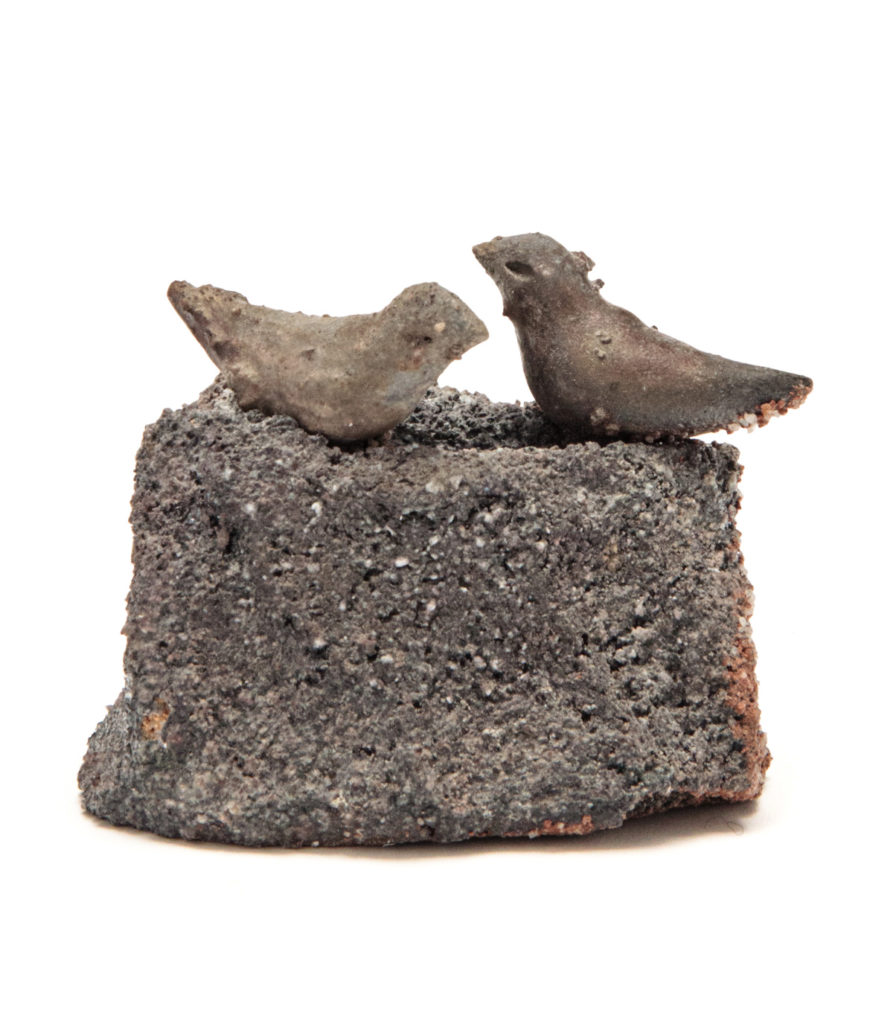Eric Nelsen
The Object Transformed
Inspired by art, architecture, and object making from prehistoric times through the 20th century, Nelsen is known for creating work that pays homage to the handmade object and its historical trajectory. For Nelsen, collections, histories, studies, and archeology form a broad constellation of meaning and inspiration. “Objects take their meanings from people and culture. They become vessels for our fascinations and even our affections, and it is through objects that those feelings often outlive the people from whom they first came.” says the artist.
In his most recent body of work, Nelsen draws inspiration from a 1966 Museum of Modern Art exhibition titled, “The Object Transformed.” The curator of that exhibition, Mildred Constantine, posits that “When an object is taken out of its familiar context, or even a single detail is removed or altered, a second set of associations may be brought into play. If the resulting visual metaphor is sufficiently powerful, even the most ubiquitous artifact may be transformed into a unique experience.” Nelsen’s sculptures similarly seek to recontextualize, alter, and transform familiar forms, allowing unexpected relationships and new associations to emerge intuitively.
Early in his career, Eric Nelsen traveled to Japan to study traditional kiln building and ceramic techniques. After returning to the United States in 1976, Nelsen built one of the first anagama kilns in the country. Anagama is a technique in which ceramic sculptures are fired, using wood to fuel the kiln, for a week in temperatures reaching 2500°F. Over the course of multiple days in the kiln, the pieces, not otherwise glazed, are covered with molten wood ash that builds up into colors that run from gray to brick.
In 1978, Nelsen established a studio in Seattle and in 1981, he returned to Japan to work as an apprentice to Kaneshge Michiaki in Bizen. Since 1985, he has maintained a studio on Vashon Island, WA.
-
About
Eric Nelsen - view profile
Eric Nelsen assembles many diverse objects and images into his sculptures. He uses wood fire techniques, coupled with cast figures from popular culture, that combines elements of Japanese ceramics, American consumer culture, and modern European painting, which force the viewer to investigate. He might use an African mask head, a Tang dynasty horse, numerous archaic vessels, a figure with a posture from the 19th-century French painter, Ingres and a scale model of Noguchi’s “Black Sun” sculpture (all in the same piece).
Early in his career, Eric Nelsen traveled to Japan to study traditional kiln building and ceramic techniques. After returning to the United Sates in 1976, Nelsen built one of the first anagama kilns in the country. Anagama is a technique in which ceramic sculptures are fired, using wood to fuel the kiln, for a week temperatures reaching 2500°F. Over the course of days in the kiln, the pieces, not otherwise glazed, are covered with molten wood ash that builds up into colors that run from gray to brick.
In 1978, Nelsen established a studio in Seattle and in 1981, he returned to Japan to work as an apprentice to Kaneshge Michiaki in Bizen. Since 1985, he has maintained a studio anagama kiln on Vashon Island, WA.
